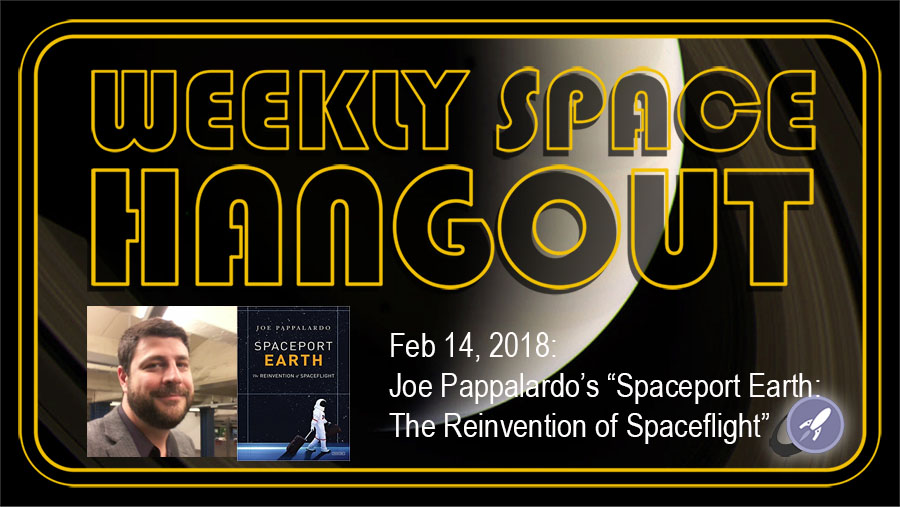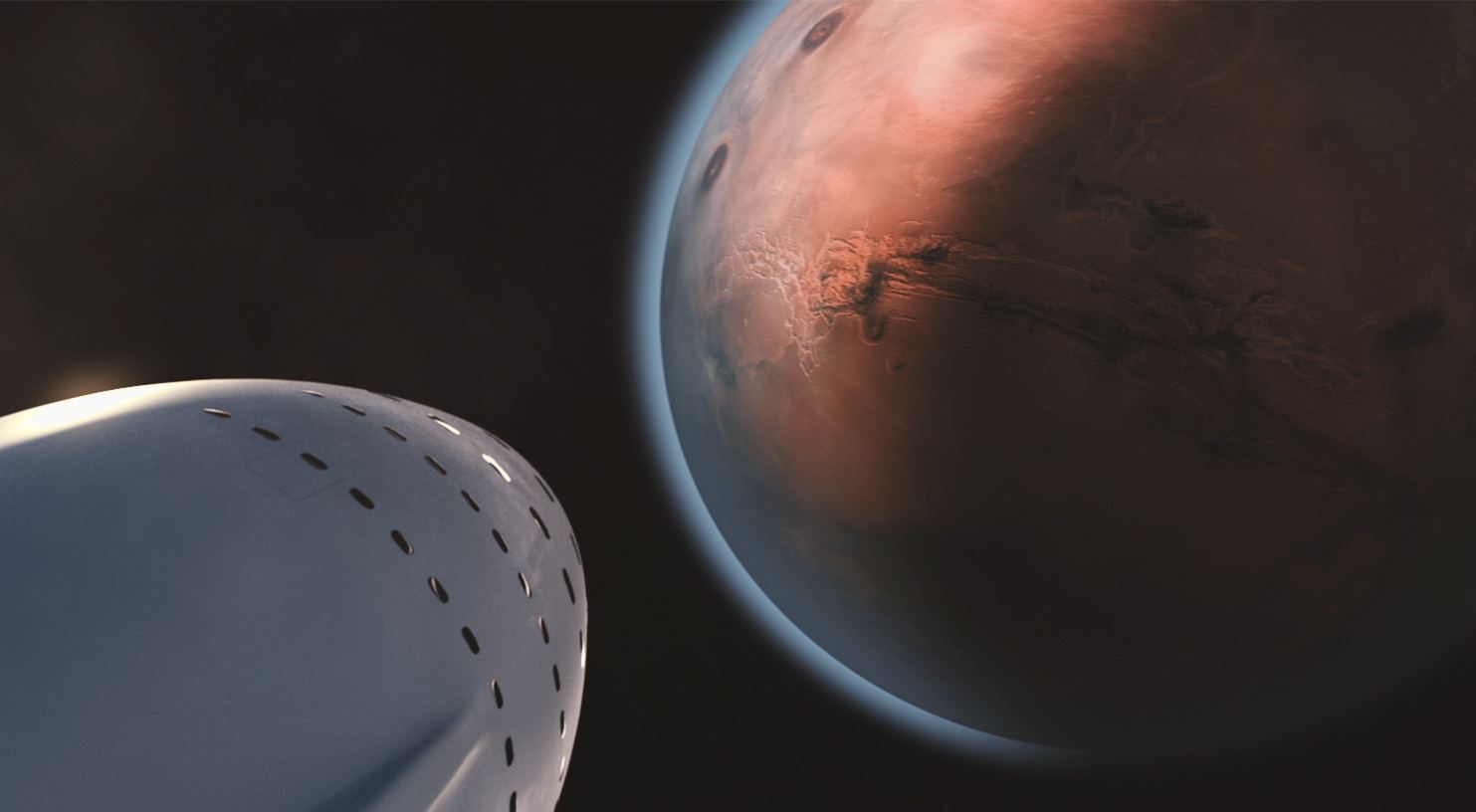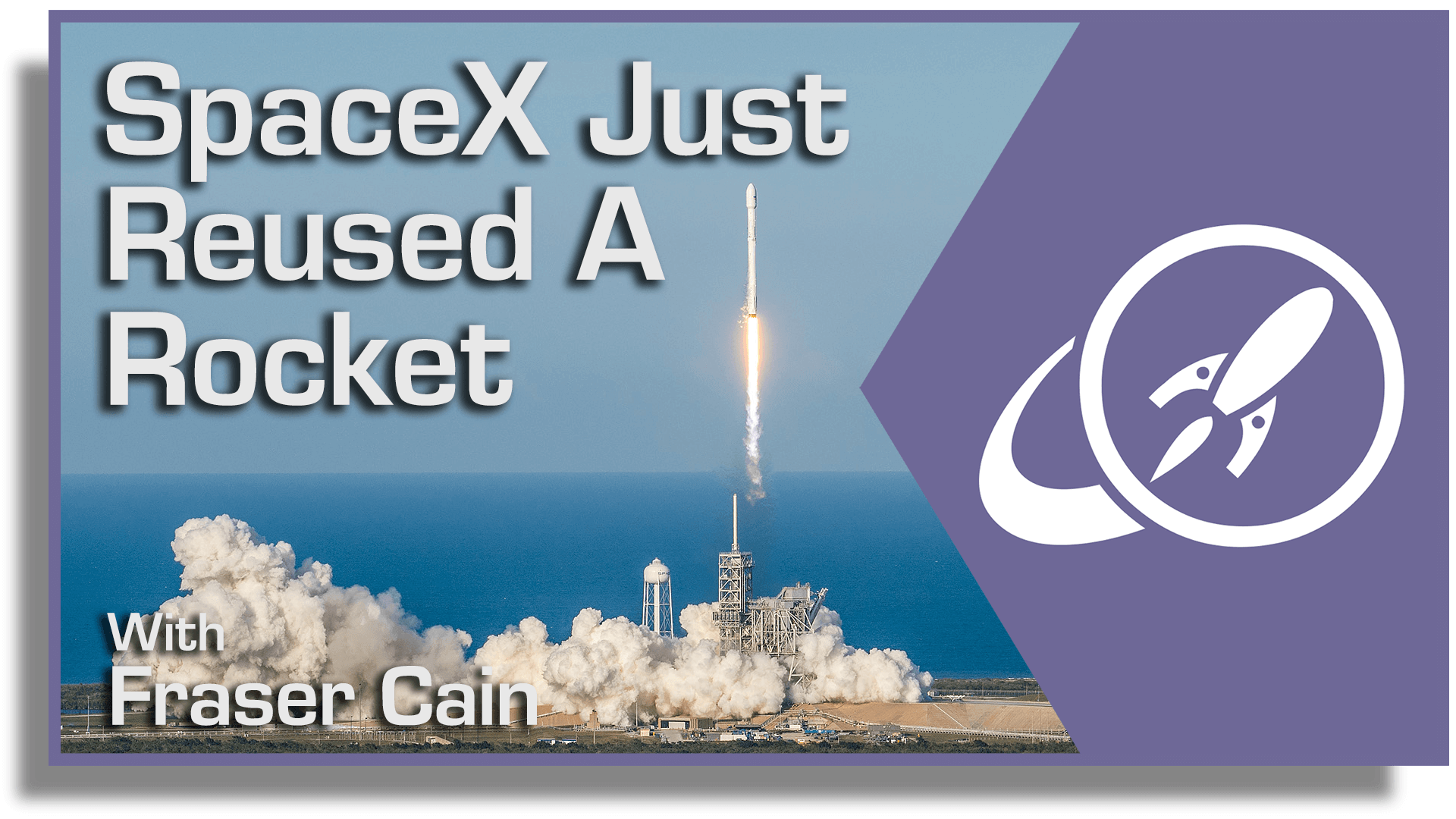Welcome to the 549th Carnival of Space! The Carnival is a community of space science and astronomy writers and bloggers, who submit their best work each week for your benefit. So now, on to this week’s stories!
Continue reading “Carnival of Space #549”
Astrophotographer Captures Musk’s Tesla Roadster Moving Through Space
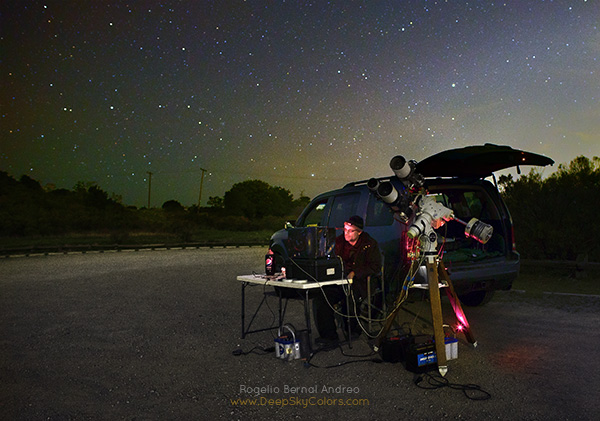
An astrophotographer in California has captured images of Elon Musk’s Tesla Roadster on its journey around our Sun. In the early morning of February 9th, Rogelio Bernal Andreo captured images of the Roadster as it appeared just above the horizon. To get the images, Andreo made use of an impressive arsenal of technological tools.
Andreo knew that photographing the Roadster would be a challenge, since it was over a million miles away at the time. But he has the experience and equipment to pull it off. The first task was to determine where the Tesla would be in the sky. Luckily, NASA’s JPL creates lists of coordinates for objects in the sky, called ephemerides. Andreo found the ephemeris for Starman and the Roadster, and it showed that the pair would be in the Hydra constellation, and that they would be only about 20 degrees above the horizon. That’s a challenge, because it means photographing through more atmospheric density.

However, the Roadster and its driver would be bright enough to do it. As Andreo says in his blog, “The ephemeris from the JPL also indicated that the Roadster’s brightness would be at magnitude 17.5, and I knew that’s perfectly achievable.” So he gathered his gear, hopped in his vehicle, and went for it.
Andreo’s destination was the Monte Bello Open Space Preserve, a controlled-access area for which he has a night-time use permit. This area is kind of close to the San Francisco Bay Area, so the sky is a little bright for astrophotography, but since the Roadster has a magnitude of 17.5, he thought it was doable. Plus, it’s a short drive from his home.
Once he arrived there, he set up his impressive array of gear: dual telescopes and cameras, along with a tracking telescope and computers running specialized software. Andreo explains it best:
“Let me give you a brief description of my gear – also the one I use for most of my deep-sky images. I have a dual telescope system: two identical telescopes and cameras in parallel, shooting simultaneously at the very same area of the sky – same FOV, save a few pixels. The telescopes are Takahashi FSQ106EDX. Their aperture is 106mm (about 4″) and they give you a native 530mm focal length at f/5. The cameras are SBIG STL11k monochrome CCD cameras, one of the most legendary full-frame CCD cameras for astronomy (not the best one today, mind you, but still pretty decent). All this gear sits on a Takahashi EM-400 mount, the beast that will move it at hair-thin precision during the long exposures. I brought the temperature of the CCD sensors to -20C degrees (-4F) using the CCD’s internal cooling system.”
CCD’s with internal cooling systems. Very impressive!

Andreo uses a specialized focusing system to get his images. He uses focusers from Robofocus and precision focusing software called FocusMax. He also uses a third, smaller telescope called an autoguider. It focuses on a single star in the Field of View and follows it religiously. When that star moves, the whole rig moves. As Andreo says on his blog, “Autoguiding provides a much better mount movement than tracking, which is leaving up to the mount to blindly “follow” the sky. By actually “following” a star, we can make sure there’ll be no trails whether our exposures are 2 or 30 minutes long.”
Once he was all set up, there was time pressure. The Roadster would only be above the horizon for a short time and the Moon was coming up and threatening to wash out the sky. Andreo got going, but his first shots showed nothing.

Andreo felt that once he got home and could process the images properly, the Tesla Roadster and its driver would be somewhere in his images. He kept taking pictures until about 5 AM. Cold and tired, he finally packed up his gear and went home.
“…no matter what I did, I could not find the Roadster.” Astrophotographer Rogelio Bernal Andreo
After some sleep, he began working with his images. “After a few hours of sleep, I started playing with the data and no matter what I did, I could not find the Roadster. I kept checking the coordinates, nothing made sense. So I decided to try again. The only difference would be that this time the Moon would rise around 3:30am, so I could try star imaging at 2:30am and get one hour of Moon-free skies, maybe that would help.”

So Andreo set out to capture the Roadster again. The next night, at the same location, he set up his gear again. But this time, some clouds rolled in, and Andreo got discouraged. He stayed to wait for the sky to improve, but it didn’t. By about 4 AM he packed up and headed home.
After a nap, he went over his photos, but still couldn’t find the Roadster. It was a puzzle, because he knew the Roadster’s coordinates. Andreo is no rookie, his photos have been published many times in Astronomy Magazine, Sky and Telescope, National Geographic, and other places. His work has also been chosen as NASA’s APOD (Astronomy Picture of the Day) more than 50 times. So when he can’t find something in his images that should be there, it’s puzzling.
Then he had an A-HA! moment:
“Then it hit me!! When I created the ephemeris from the JPL’s website, I did not enter my coordinates!! I went with the default, whatever that might be! Since the Roadster is still fairly close to us, parallax is significant, meaning, different locations on Earth will see Starman at slightly different coordinates. I quickly recalculate, get the new coordinates, go to my images and thanks to the wide field captured by my telescopes… boom!! There it was!! Impossible to miss!! It had been right there all along, I just never noticed!”
Andreo is clearly a dedicated astrophotographer, and this is a neat victory for him. He deserves a tip of the hat from space fans. Why not check out his website—his gallery is amazing!—and share a comment with him.
Rogelio Bernal Andreo’s website: DeepSkyColors.com
His gallery: http://www.deepskycolors.com/rba_collections.html
Also, check out his Flickr page: https://www.flickr.com/photos/deepskycolors/
Andreo explained how he got the Roadster images in this post on his blog: Capturing Starman from 1 Million Miles
What are the Chances Musk’s Space Tesla is Going to Crash Into Venus or Earth?
On February 6th, 2018, SpaceX successfully launched its Falcon Heavy rocket into orbit. This was a momentous occasion for the private aerospace company and represented a major breakthrough for spaceflight. Not only is the Falcon Heavy the most powerful rocket currently in service, it is also the first heavy launch vehicle that relies on reusable boosters (two of which were successfully retrieved after the launch).
Equally interesting was the rocket’s cargo, which consisted of Musk’s cherry-red Tesla Roadster with a spacesuit in the driver’s seat. According to Musk, this vehicle and its “pilot” (Starman), will eventually achieve a Hohmann Transfer Orbit with Mars and remain there for up to a billion years. However, according to a new study, there’s a small chance that the Roadster will collide with Venus or Earth instead in a few eons.
The study which raises this possibility recently appeared online under the title “The random walk of cars and their collision probabilities with planets.” The study was conducted by Hanno Rein, an assistant professor at the University of Toronto; Daniel Tamayo, a postdoctoral fellow with the Center for Planetary Sciences (CPS) and the Canadian Institute for Theoretical Astrophysics (CITA); and David Vokrouhlick of the Institute of Astronomy at Charles University in Prague.
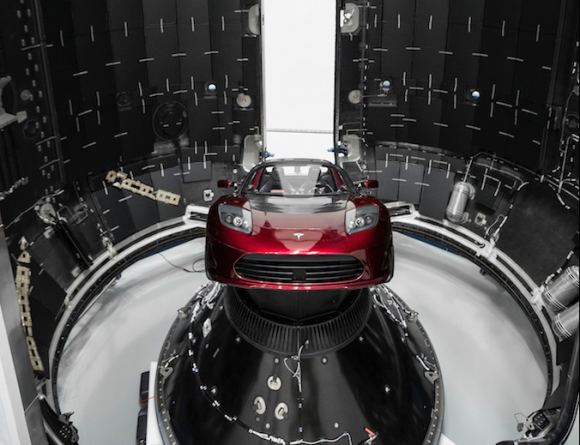
As we indicated in a previous post, Musk’s original flight plan has the potential to place the Roadster into a stable orbit around Mars… after a fashion. According to Max Fagin, an aerospace engineer from Colorado and a space camp alumni, the Roadster will get close enough to Mars to establish an orbit by October of 2018. However, this orbit would not rule out close encounters with Earth over the course of the next few million years.
For the sake of their study, Rein and his colleagues considered how such close encounters might alter the Roadster’s orbit in that time. Using data from NASA’s HORIZONS interface to determine the initial positions of all Solar planets and the Roadster, the team calculated the likelihood of future close encounters between the vehicle and the terrestrial planets, and how likely a resulting collision would be.
As they indicated, the Roadster bears some similarities to Near-Earth Asteroids (NEAs) and ejecta from the Earth-Moon system. In short, NEAs permeate the inner Solar System, regularly crossing the orbits of terrestrial planets and experiencing close encounters with them (resulting in the occasional collision). In addition, ejecta from the Earth and Moon also experience close encounters with the terrestrial planets and collide with them.
However, the Tesla Roadster is unique in two key respects: For one, it originated from Earth rather than being pulled from the Asteroid Belt into the inner Solar System by strong resonances. Second, it had a higher ejection velocity when it left Earth, which tends to result in fewer impacts. “Given the peculiar initial conditions and even stranger object, it therefore remains an interesting question to probe its dynamics and eventual fate,” they claim.
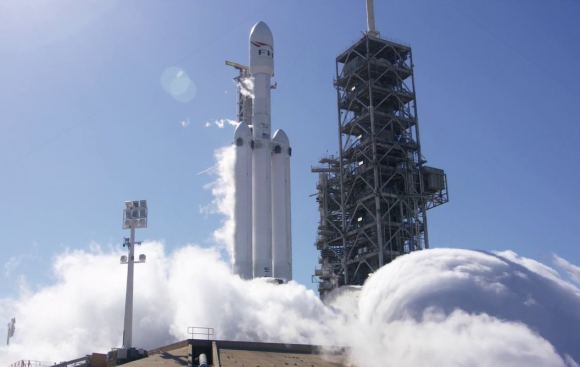
Another challenge was how the probability of an impact will change drastically over time. While the chance of a collision can be ruled out in the short run (i.e. the next few years), the Roadster’s chaotic orbit is difficult to predict over the course of subsequent close encounters. As such, the team performed a statistical calculation to see how the orbit and velocity of the Roadster would change over time. As they state in their study:
“Given that the Tesla was launched from Earth, the two objects have intersecting orbits and repeatedly undergo close encounters. The bodies reach the same orbital longitude on their synodic timescale of ~2.8 yrs.”
They began by considering how the Roadster’s orbit would evolve over the course of its next 48 orbits, which would encompass the next 1000 years. They then expanded the analysis to consider long-term evolution, which encompassed 240 orbits over the course of the next 3.5 million years. What they found was that on a million-year timescale, the orbit of the Roadster remains in a region dominated by close encounters with Earth.
However, over time, their simulations show that the Roadster will experience changes in eccentricity due to resonant and secular effects. This will result in interactions more frequent interactions between the Roadster and Venus over time, and close encounters with Mars becoming possible. Over long enough timescales, the team even anticipates that interactions with Mercury’s orbit will be possible (though unlikely).
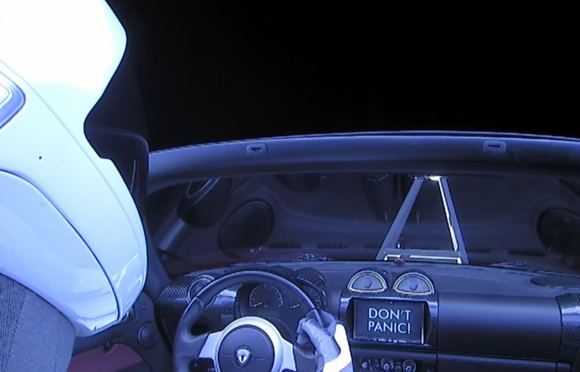
In the end, their simulations revealed that over the course of a million years and beyond, the probability of a collision with a terrestrial planet is unlikely, but not impossible. And while the odds are slim, they favor an eventual collision with Earth. Or as they put it:
“Although there were several close encounters with Mars in our simulations, none of them resulted in a physical collision. We find that there is a ~6% chance that the Tesla will collide with Earth and a ~2.5% chance that it will collide with Venus within the next 1 Myr. The collision rate goes down slightly with time. After 3 Myr the probability of a collision with Earth is ~11%. We observed only one collision with the Sun within 3 Myr.”
Given the Musk hoped that his Roadster would remain in orbit of Mars for one billion years, and that aliens might eventually find it, the prospect of it colliding with Earth or Venus is a bit of a letdown. Why bother sending such a unique payload into space if it’s just going to come back? Still, the odds that it will be drifting through space for millions of years remains a distinct possibility.
And if there are any worries that the Roadster will pose a threat to future missions or Earth itself, consider the message Starman was looking at during his ascent into space – Don’t Panic! Assuming humanity is even alive eons from now, the far greater danger will be that such an antique will burn up in our atmosphere. After millions of years, Starman is sure to be a big celebrity!
Further Reading: arXiv
Weekly Space Hangout: Feb 14, 2018: Joe Pappalardo’s “Spaceport Earth”
Hosts:
Fraser Cain (universetoday.com / @fcain)
Dr. Paul M. Sutter (pmsutter.com / @PaulMattSutter)
Dr. Kimberly Cartier (KimberlyCartier.org / @AstroKimCartier )
Dr. Morgan Rehnberg (MorganRehnberg.com / @MorganRehnberg & ChartYourWorld.org)
Special Guests:
Joe Pappalardo is the author of the new popular science and technology book, Spaceport Earth: The Reinvention of Spaceflight (The Overlook Press; Available Now). In it, Pappalardo “tackles the ever-changing, 21st-century space industry and what privately funded projects like Elon Musk’s SpaceX mean for the future of space travel.” (Foreign Policy)
Spaceport Earth takes readers on a tour of these high-stakes sites as Pappalardo examines how private companies are reshaping the way we use, intend to use, and view space travel, not solely for scientific exploration but for increasingly more general travel. Visiting every working spaceport in the United States and rocket launches around the world, Pappalardo presents a travelogue and modern history of spaceflight — where the industry is now and what’s on the horizon for explorers and consumers alike—in Spaceport Earth.
Learn more about Spaceport Earth, including where to buy it, here: http://www.overlookpress.com/categories/spaceport-earth-the-reinvention-of-spaceflight.html
——————————————————-
Chris Prophet, author of SpaceX From the Ground Up, joins us again to discuss with Fraser last week’s Falcon Heavy success.
Announcements:
If you would like to join the Weekly Space Hangout Crew, visit their site here and sign up. They’re a great team who can help you join our online discussions!
We record the Weekly Space Hangout every Wednesday at 5:00 pm Pacific / 8:00 pm Eastern. You can watch us live on Universe Today, or the Weekly Space Hangout YouTube page – Please subscribe!
Weekly Space Hangout – Feb 7, 2018: Weekly News Roundup
Hosts:
Dr. Kimberly Cartier (KimberlyCartier.org / @AstroKimCartier )
Dr. Morgan Rehnberg (MorganRehnberg.com / @MorganRehnberg & ChartYourWorld.org)
Special Guest Hosts:
Dr. Pamela Gay (cosmoquest.org / @starstryder )
Dr. Nicole Gugliucci (@noisyastronomer)
While Fraser and Paul are in Iceland, Kimberly and Morgan hold down the fort, and have Pamela and Nicole join to discuss the major news of the week – like the SpaceX Falcon Heavy successful launch!
Announcements:
If you would like to join the Weekly Space Hangout Crew, visit their site here and sign up. They’re a great team who can help you join our online discussions!
We record the Weekly Space Hangout every Wednesday at 5:00 pm Pacific / 8:00 pm Eastern. You can watch us live on Universe Today, or the Weekly Space Hangout YouTube page – Please subscribe!
Here’s a Prediction About the Orbit Musk’s Tesla is Going to Take Through the Solar System
After multiple delays, SpaceX recently announced that the inaugural flight of their Falcon Heavy rocket would take place this Tuesday, February 6th, 2018. This rocket, which is the heaviest launch vehicle in the SpaceX fleet (and the most powerful operational rocket in the world right now), is not only central to the company’s vision of reusable rockets, but also to Musk’s long-term vision of sending humans to Mars.
As a result, people all over the world have been tuning in to watch the coverage of the event, and eagerly waiting to see the rocket take off before its launch window closes at 04:00 pm (PST) this afternoon. In keeping with Musk’s habit of sending interesting payloads into space, the rocket will be carrying his cherry-red Tesla Roadster, with the goal of depositing it into a stable orbit around Mars.
According to previous statements made by Musk, the plan calls for the Falcon Heavy to launch the Roadster on a Hohmann Transfer trajectory, an orbital maneuver where a satellite or spacecraft is transferred from one circular orbit to another. After being placed in an elliptical orbit between Earth and Mars, the Roadster would be picked up by Mars’ gravity and remain in orbit around it for (according to Musk) up to a billion years!
To add to the peculiarity of the mission payload, Musk has also been clear that he wants the car to be playing “Space Oddity” – the famous song written and performed by the late and great David Bowie – as its launched into space. This classic song recently got a shot in the arm thanks to Canadian astronaut Chris Hadfield, who performed a rendition of the song while still serving as the commander of Expedition 35 aboard the International Space Station.
But unlike Hadfield’s more positive rendition of the song (which you can watch above), in which the astronaut (Major Tom) does NOT die, Musk’s Roadster will be belting out this tune in its original form. One can only assume that he’s not a particularly superstitious man, or just has a very quirky sense of humor. Considering that a previous payload consisted of a wheel of cheese, I think we know the answer!
Musk confirmed that the launch would take place at 0:130 pm EST (10:30 am PST) in a tweet he posted yesterday, where he stated:
All systems remain green for launch at 1:30pm EST tomorrow
— Elon Musk (@elonmusk) February 5, 2018
This was followed by an additional tweet posted at 07:59 am PST, which indicated that the launch was still on. However, Musk announced that there would be a minor delay at 09:02 am PST, which was apparently weather-related:
“About 2.5 hours to T-0 for Falcon Heavy. Watch sim for highlight reel of what we hope happens. Car actually takes 6 months to cover 200M+ miles to Mars”
“Upper atmosphere winds currently 20% above max allowable load. Holding for an hour to allow winds to diminish.
#FalconHeavy“
In addition, changes were seen in the countdown clocks run by the US Air Force’s Eastern Range operations. This pushed the launch from its original time of 01:30 pm to 03:19 pm EST (12:19 am PST), and then led to the count being placed on hold. By 10:52 am PST this morning, the launch clock resumed and Musk indicated that the takeoff would commence at 3:45 pm EST (12:45 PST).
This was followed by the SpaceX ground crew commencing procedures to fuel the rocket at about 11:22 am PST.
Launch auto-sequence initiated (aka the holy mouse-click) for 3:45 liftoff #FalconHeavy
— Elon Musk (@elonmusk) February 6, 2018
Naturally, there has been plenty of speculation about the possible outcome of the mission. Max Fagin, an aerospace engineer from Colorado and a space camp alumni, is one such person. In a video he uploaded to his Youtube channel yesterday (Feb. 5th, 2018), he clarified what the proposed launch entails and offered his thoughts on what will likely happen to the Roadster once its sent into space.
Addressing Musk’s stated goal of a Hohmann Transfer that would put the roadster into Mars’ orbit, he indicated that Musk must have been oversimplifying because there’s no reason to launch a spacecraft on such a trajectory right now. This is due to the fact that this maneuver only makes sense when Earth and Mars are at the closest points in their orbits to each other – aka. when Mars is at opposition.
This is not the case at present, and won’t be again until April-May of this year. At that point, Earth and Mars will be the closest they have been to each other since the year 2000, and will not be in such a perfect opposition again until 2033. As a result, says Fagin, a “true Hohmann Transfer launched from Earth to Mars right now would take the Roadster no closer than 90 million km from Mars – 0.6 times the distance from Earth to the Sun.”
Having said all that, here is what Fagin thinks is actually going to happen:
“Given how light the Roadster is, and given how powerful the Falcon Heavy is, I suspect Falcon heavy is going to impart a little extra delta-v to the Roadster, beyond what would be required for a minimum-energy Hohmann Transfer. This would allow the Roadster to get as close to Mars as SpaceX wanted sometime in October of 2018.”
According to Fagin’s analysis, the Roadster would still not be able to remain in the same orbit of Mars for a billion years, which was Musk’s stated goal. But it would achieve a more stable orbit than a basic Hohmann Transfer would accomplish. In that scenario, the orbit would be perturbed by close encounters with Earth, and the Roadster might eventually come back to Earth.
In other words, the plan may be more complicated than originally stated, but could be largely successful all the same. Come what may, there is no shortage of people who want to see this rocket successfully take off! After all, it’s not only SpaceX’s future that is riding on the outcome of this launch, but perhaps even the future of space exploration itself. Cheaper costs and restored launch capability, that’s what it’s all about!
Barring any further delays, which will push the launch back until tomorrow, the launch will be taking place in T-minus 20 minutes (as of the penning of this article)! In the meantime, be sure to check out SpaceX’s live coverage of the event, which begins today (Tuesday, Feb. 6th) at
Further Reading: SpaceX webcast, SpaceX, Twitter (Elon Musk), Orlando Sentinel
Finally! SpaceX’s Falcon Heavy Does its Static Fire Test. Actual Flight Should Be “In A Week Or So”
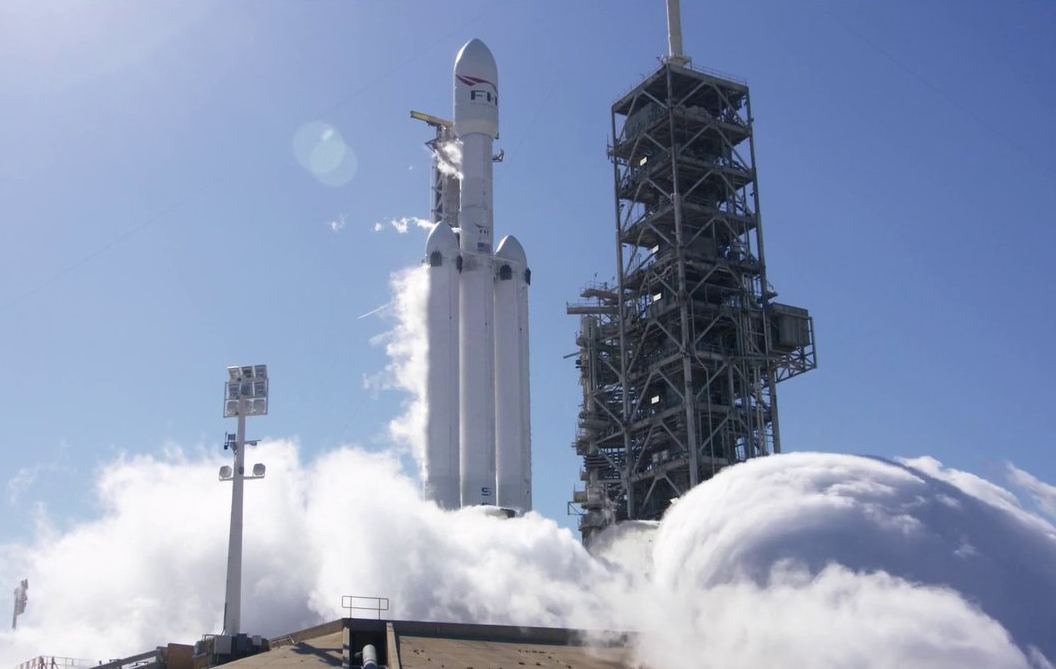
The long-awaited Static Fire of SpaceX’s Falcon Heavy rocket has been declared a success by SpaceX founder Elon Musk. After this successful test, the first launch of the Falcon Heavy is imminent, with Musk saying in a Tweet, “Falcon Heavy hold-down firing this morning was good. Generated quite a thunderhead of steam. Launching in a week or so.”
This is a significant milestone for the Falcon Heavy, considering that SpaceX initially thought the Heavy’s first flight would be in 2013. The first launch for the Falcon Heavy has always seemed to be tantalizingly out of reach. If space enthusiasts could’ve willed the thing into space, it would’ve launched years ago. But that’s not how it goes.
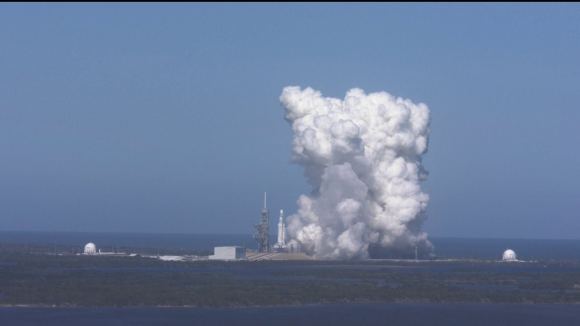
Developing rockets like the Falcon Heavy is not a simple matter. Even Musk himself admitted this when he said in July, “At first it sounds real easy: you just stick two first stages on as strap-on boosters. But then everything changes. All the loads change; aerodynamics totally change. You’ve tripled the vibration and acoustics.” So it’s not really a surprise that the Falcon Heavy’s development has seen multiple delays.
After first being announced in 2011, the rocket’s first flight was set for 2013. That date came and went, then in 2015 rocket failures postponed the flight. Failures postponed SpaceX again in 2016. New target dates were set for late 2016, then early 2017, then late 2017. But with this successful test, long-suffering space fans can finally breathe a sigh of relief, and their collective sigh will last about as long as the static fire: only a few seconds.
First static fire test of Falcon Heavy complete—one step closer to first test flight! pic.twitter.com/EZF4JOT8e4
— SpaceX (@SpaceX) January 24, 2018
The Falcon Heavy has a total of 27 individual rocket engines, and all 27 of them were fired in this test, though the Heavy never left the launch pad. For those who don’t know, the Falcon Heavy is based on SpaceX’s successful Falcon 9 rocket, a nine-engine machine that made SpaceX the first commercial space company to visit the International Space Station, when the Falcon 9 delivered SpaceX’s Dragon capsule to the ISS in 2012. Since then, the Falcon has a track record of delivering cargo to the ISS and launching satellites into orbit.
The Heavy is like a Falcon 9 with two more 9-engine boosters strapped on. It will be the most powerful rocket in operation, by a large margin. (It won’t be the most powerful rocket in history though. That title still belongs to the Saturn V rocket, last launched in 1973.)
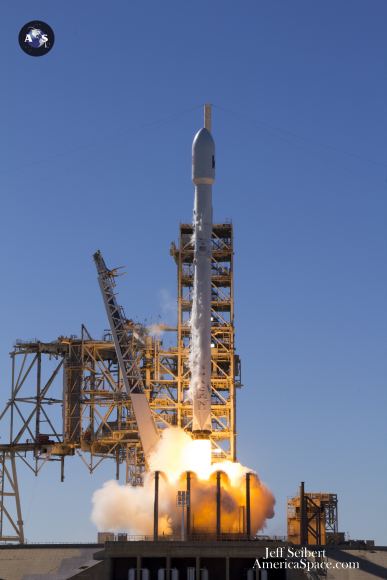
The Falcon Heavy will create 5 million pounds of thrust at lift-off, and will be able to carry about 140,000 lbs, which is about three times what the Falcon can carry. The Falcon’s engine core is reusable, and returns itself to Earth after detaching from the second stage. The Falcon Heavy will do the same, with all three cores returning to Earth for reuse. The two outer cores will return to the launch pad at Cape Canaveral, and the center core will land on a drone ship in the Atlantic. This is part of the genius behind the SpaceX designs: reusable components keep the cost down.
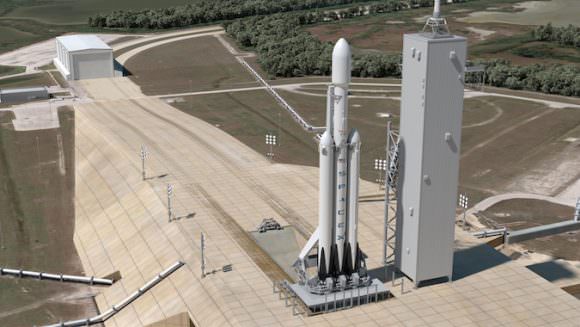
We aren’t exactly sure when the first launch of the Falcon Heavy will be, and its first launch may be a very short flight. It’s possible that it may only get a few feet off the launch pad. At a conference in July, Musk said, “I hope it makes it far enough beyond the pad so that it does not cause pad damage. I would consider even that a win, to be honest.”
We know a few things about the eventual first launch and flight of the Falcon. There won’t be any scientific or commercial payload on-board. Rather, Musk intends to put his own personal Tesla roadster on-board as payload. If successful, it will be the first car to go on a trip around the Sun. (I call Shotgun!) It’s kind of silly to use a rocket to send a car around the Sun, but it will generate publicity. Not only for SpaceX, but for Tesla too.
If the launch is successful, the Falcon Heavy will be open for business. SpaceX already has some customers lined up for the Falcon Heavy, with a Saudi Arabian communications satellite first in line. After that, its second commercial mission will place several satellites in orbit. The US Air Force will be watching these launches closely, with an eye to using the Falcon Heavy for their own purposes.
But the real strength of the Falcon Heavy is not blasting cars on frivolous trips around the Sun, or placing communications satellites in orbit. Its destination is deep space.
Originally, SpaceX planned to use the Falcon Heavy to send people to Mars in a Dragon capsule. They’ve cancelled that idea, but the Heavy still has the capability to send rovers or other cargo to Mars and beyond. Who knows what uses it will be put to, once it has a track record of success.
We’re all eager to see the successful launch of the Falcon heavy, but while we wait for it, we can enjoy this animation from SpaceX.
In Preparation for its Inaugural Launch, the Falcon Heavy Receives its Special Cargo – Musk’s Tesla Roadster!
After years of preparation, SpaceX is gearing up for the inaugural launch of its Falcon Heavy rocket. As the name would suggest, this rocket is the heaviest launch vehicle in the SpaceX arsenal. With a payload capacity of 54 metric tons (119,000 lbs), it can lift over twice as much weight of the next heaviest launch vehicle (the ULA’s Delta IV Heavy). And in time, SpaceX hopes to use this rocket to send astronauts into orbit, to the Moon, and on to Mars.
Basically, the Falcon Heavy is integral to SpaceX’s mission to usher in an age of affordable space travel and restoring domestic launch capability to the United States. With the inaugural launch scheduled to take place no earlier than January of 2018, the company is currently putting the final touches on the rocket. This includes releasing pictures of the payload which will be sent into space, which is none other than Elon Musk’s own cherry-red Tesla Roadster.
The inaugural launch will take place at SpaceX’s Launch Complex 39A, which is located at the Kennedy Space Center in Florida. This same launch pad was where the historic Apollo 11 mission launched from on July 16th, 1969, sending the first astronauts to the Moon. After it launches, the rocket will send send a payload into a heliocentric solar orbit, which will put it at a distance that is about the same as Mars’ distance from the Sun.
In addition, the company will use this inaugural launch to attempt a landing of all three of the Falcon 9 engine cores, which make up the first stage of the Falcon Heavy. In the past, the company has demonstrated its ability to successfully land the first stages of Falcon 9 rockets on land and at sea. However, this will be the first time that multiple cores are recovered from a single launch.
It will also demonstrate that SpaceX is capable of reusing all stages of a heavy launch, bringing it a step closer to fulfilling its promise to reduce costs by developing fully-reusable rockets. Two of the rocket cores will land at Cape Canaveral Air Force Station while the third will land on SpaceX’s drone ship (Of Course I Still Love You) out in the Atlantic Ocean.
NASA is also offering offering viewing opportunities of the launch to the public at the Kennedy Space Center Visitor Complex. In the past, Musk has proposed sending some truly odd things into space, including a wheel of cheese. On December 1st of this year, Musk tweeted that for this momentous occasion, the special cargo would be one of his very own electric cars. As he posted on Twitter:
Payload will be my midnight cherry Tesla Roadster playing Space Oddity. Destination is Mars orbit. Will be in deep space for a billion years or so if it doesn’t blow up on ascent.
— Elon Musk (@elonmusk) December 2, 2017
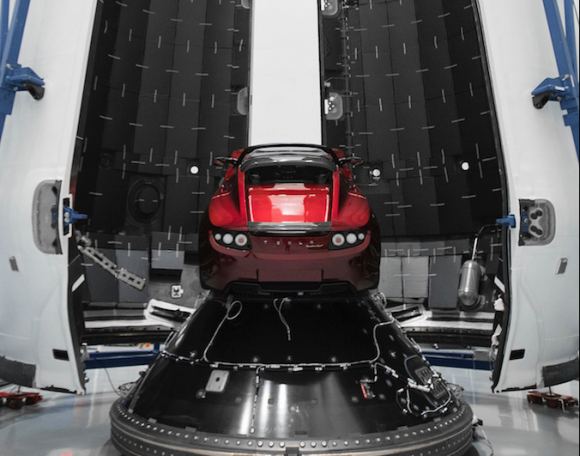
Last week, SpaceX released photos of the Tesla Roadster being loaded aboard the rocket’s payload fairing. Forthe purposes of launching it into space, the Roadster has been mounted on a special adapter structure, which are typically used when launching satellites into orbit. The photos also showed the Roadster being enclosed inside the rocket’s payload fairing, which will carry the car into space and place it at its heliocentric orbit.
Musk naturally avoided making any predictions about the launch, saying only that the launch was “Guaranteed to be exciting, one way or another.” However, when asked about his choice of cargo, Musk was both candid and cheeky in his response, tweeting:
“I love the thought of a car drifting apparently endlessly through space and perhaps being discovered by an alien race millions of years in the future.”
One can only imagine what they will conclude about humans. Perhaps that they were are both environmentally friendly and pretty flashy! While the exact date of the launch is still yet to be determined, Musk is certainly correct in predicting that it will be an exciting event. Given the sheer significance of this flight, the eyes of the world will be firmly fixed on Launch Complex 39A when it does take place.
Good luck SpaceX! And good luck to you too little Roadster!
Further Reading: Kennedy Space Center, Spaceflight Now, SpaceX
Elon Musk Details His Vision for a Human Civilization on Mars
Elon Musk has never been one to keep his long-term plans to himself. Beyond the development of reusable rockets, electric cars, and revolutionizing solar power, he has also been quite vocal about establishing a colony on Mars within his lifetime. The goal here is nothing less than ensuring the survival of the human race by creating a “backup location”, and calls for some serious planning and architecture.
These and other aspects of Musk’s proposed mission to Mars were outlined in an essay titled “Making Humans a Multi-Planetary Species“, which was published in the June 2017 issue of the journal New Space. The paper is a summary of the presentation he made at the 67th Annual Meeting of the International Astronautical Congress, which took place from September 26th–30th, 2016, in Guadalajara, Mexico.
The paper was produced by Scott Hubbard, a consulting professor at Stanford University and the Editor-in-Chief of NewSpace, and includes all the material and slides from Musk’s original presentation. Contained within are Musk’s thoughts on how the colonization of Mars could be accomplished in this century and what issues would need to be addressed.
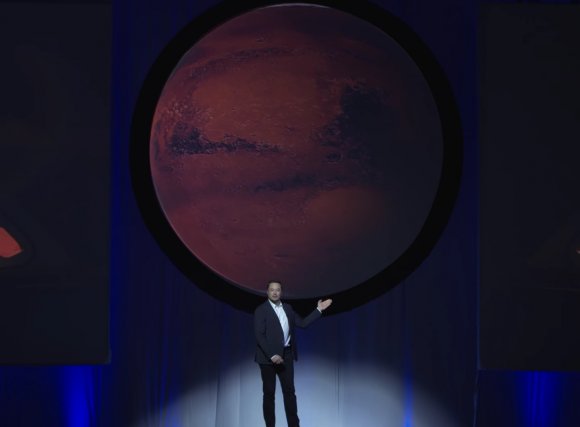
These include the costs of sending people and payloads to Mars, the technical details of the rocket and vehicle that would be making the trip, and possible cost breakdowns and timelines. But of course, he also addresses the key philosophical questions – “Why go?” and “Why Mars?”
Addressing this first question is one of the most important aspects of space exploration. Remember John F. Kennedy’s iconic “We Choose to go to the Moon” speech? Far from just being a declaration of intent, this speech was a justification by the Kennedy administration for all the time, energy, and money it was committing to the Apollo program. As such, Kennedy’s speech stressed above all else why the goal was a noble undertaking.
In looking to Mars, Musk struck a similar tone, emphasizing survival and humanity’s need to expand into space. As he stated:
“I think there are really two fundamental paths. History is going to bifurcate along two directions. One path is we stay on Earth forever, and then there will be some eventual extinction event. I do not have an immediate doomsday prophecy, but eventually, history suggests, there will be some doomsday event. The alternative is to become a space-bearing civilization and a multi-planetary species, which I hope you would agree is the right way to go.”
As for what makes Mars the natural choice, that was a bit more of a tough sell. Granted, Mars has a lot of similarities with Earth – hence why it is often called “Earth’s Twin” – which makes it a tantalizing target for scientific research. But it also has some rather stark differences that make long-term stays on the surface seem less than appealing. So why would it be the natural choice?
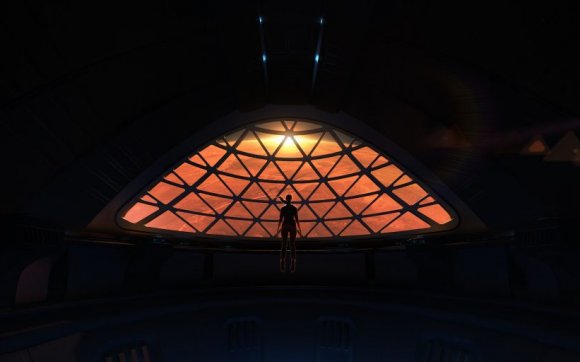
As Musk explains, proximity has a lot to do with it. Sure, Venus is closer to Earth, getting as close as 41 million km (25,476,219 mi), compared to 56 million km (3,4796,787 mi) with Mars. But Venus’ hostile environment is well-documented, and include a super-dense atmosphere, temperatures hot enough to melt lead and sulfuric acid rain! Mercury is too hot and airless, and the Jovian moons are very far.
This leaves us with just two options for the near-future, as far as Musk is concerned. One is the Moon, which is likely to have a permanent settlement on it in the coming years. In fact, between the ESA, NASA, Roscosmos, and the Chines National Space Administration, there is no shortage of plans to build a lunar outpost, which will serve as a successor to the ISS.
But compared to Mars, it is less resource rich, has no atmosphere, and represents a major transition as far as gravity (0.165 g compared to 0.376 g) and length of day (28 days vs. 24.5 hours) are concerned. Herein lies the greatest reason to go to Mars, which is the fact that our options are limited and Mars is the most Earth-like of all the bodies that are currently accessible to us.
What’s more, Musk makes allowances for the fact that colonists could start kick-starting the terraforming process, to make it even more Earth-like over time. As he states (bold added for emphasis):
“In fact, we now believe that early Mars was a lot like Earth. In effect, if we could warm Mars up, we would once again have a thick atmosphere and liquid oceans. Mars is about half as far again from the Sun as Earth is, so it still has decent sunlight. It is a little cold, but we can warm it up. It has a very helpful atmosphere, which, being primarily CO2 with some nitrogen and argon and a few other trace elements, means that we can grow plants on Mars just by compressing the atmosphere.
“It would be quite fun to be on Mars because you would have gravity that is about 37% of that of Earth, so you would be able to lift heavy things and bound around. Furthermore, the day is remarkably close to that of Earth. We just need to change the populations because currently we have seven billion people on Earth and none on Mars.”
Naturally, no mission can be expected to happen without the all-important vehicle. To this end, Musk used the annual IAC meeting to unveil his company’s plans for the Interplanetary Transport System. An updated version of the Mars Colonial Transporter (which Musk began talking about in 2012), the ITS will consist of two main components – a reusable rocket booster and the Interplanetary Spaceship.
The process for getting to Mars with these components involves a few steps. First, the rocket booster and spaceship take off together and the spaceship is delivered into orbit. Next, while the spaceship assumes a parking orbit, the booster returns to Earth to be reloaded with the tanker craft. This vehicle is the same design as the spaceship, but contains propellant tanks instead of cargo areas.
The tanker is then launched into orbit with the booster, where it will rendezvous with the spaceship and refuel it for the journey to Mars. Overall, the propellant tanker will go up anywhere from three to five times to fill the tanks of the spacecraft while it is in orbit. Musk estimates that the turnaround time between the spacecraft launch and the booster retrieval could eventually be as low as 20 minutes.
This process (if Musk gets its way) would expand to include multiple spaceships making the journey to and from Mars every 26 months (when Mars and Earth are closest together):
“You would ultimately have upwards of 1,000 or more spaceships waiting in orbit. Hence, the Mars Colonial fleet would depart en masse. It makes sense to load the spaceships into orbit because you have got 2 years to do so, and then you can make frequent use of the booster and the tanker to get really heavy reuse out of those. With the spaceship, you get less reuse because you have to consider how long it is going to last—maybe 30 years, which might be perhaps 12–15 flights of the spaceship at most.”
In terms of the rocket’s structure, it would consist of an advanced carbon fiber exterior surrounding fuel tanks, which would rely on an autogenous pressurization system. This involves the fuel and oxygen being gasified through heat exchanges in the engine, which would then be used to pressurize the tanks. This is a much simpler system than what is currently being used for the Falcon 9 rocket.
The booster would use 42 Raptor engines arranged in concentric rings to generate thrust. With 21 engines in the outer ring, 14 in the inner ring, and seven in a center cluster, the booster would have an estimated lift-off thrust of 11,793 metric tons (13,000 tons) – 128 MegaNewtons – and a vacuum thrust of 12,714 metric tons (14,015 tons), or 138 MN. This would make it the first spacecraft where the rocket performance bar exceeds the physical size of the rocket.
As for the spacecraft, the designs calls for a pressurized section at the top with an unpressurized section beneath. The pressurized section would hold up to 100 passengers (thought Musk hopes to eventually increase that capacity to 200 people per trip), while all the luggage and cargo necessary for building the Martian colony would be kept in the unpressurized section below.
As for the crew compartments themselves, Musk was sure to illustrate how time in them would not be boring, since the transit time is a long. “Therefore, the crew compartment or the occupant compartment is set up so that you can do zero-gravity games – you can float around,” he said. “There will be movies, lecture halls, cabins, and a restaurant. It will be really fun to go. You are going to have a great time!”
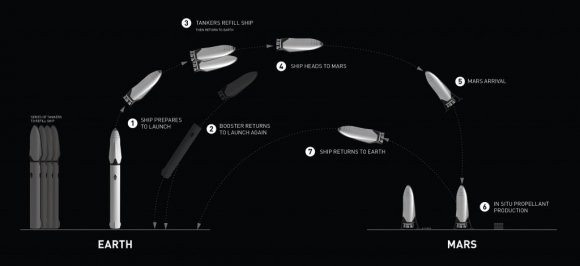
Below both these sections, the liquid oxygen tank, fuel tank and spacecraft engines are located. The engines, which would be directly attached to the thrust cone at the base, would consists of an outer ring of three sea-level engines – which would generate 361 seconds of specific impulse (Isp) – and an inner cluster of six vacuum engines that would generate 382s Isp.
The exterior of the spacecraft will also be fitted with a heatshield, which will be composed of the same material that SpaceX uses on its Dragon spacecraft. This is known as a phenolic-impregnated carbon ablator (PICA), which SpaceX is on their third version of. In total, Musk estimates that the Interplanetary Spaceship will be able to transport 450 tons of cargo to Mars, depending upon how many times the tanker can refill the craft.
And, depending on the Earth-Mars rendezvous, the transit time could be as little as 80 days one-way (figuring for a speed of 6km/s). But with time, Musk hopes to cut that down to just 30 days, which would make it possible to establish a sizable population on Mars in a relatively short amount of time. As Musk indicated, the magic number here in 1 million, meaning the number of people it would take to establish a self-sustaining colony on Mars.
He admitted that this would be a major challenge, and could as long as a century to complete:
“If you can only go every 2 years and if you have 100 people per ship, that is 10,000 trips. Therefore, at least 100 people per trip is the right order of magnitude, and we may end up expanding the crew section and ultimately taking more like 200 or more people per flight in order to reduce the cost per person. However, 10,000 flights is a lot of flights, so ultimately you would really want in the order of 1,000 ships. It would take a while to build up to 1,000 ships. How long it would take to reach that million-person threshold, from the point at which the first ship goes to Mars would probably be somewhere between 20 and 50 total Mars rendezvous—so it would take 40–100 years to achieve a fully self-sustaining civilization on Mars.”
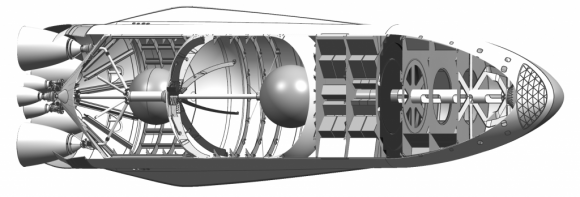
When the ITS is ready to launch, it will do so from Launch Pad 39A at the Kennedy Space Center in Florida, which SpaceX currently uses to conduct Falcon 9 launches from. But of course, the most daunting aspect of any colonization effort is cost. At present, and using current methods, sending upwards of 1 million people to Mars is simply not affordable.
Using Apollo-era methods as a touchstone, Musk indicated that the cost to go to Mars would be around $10 billion per person – which is derived from the fact that the program itself cost between $100 and $200 billion (adjust for inflation) and resulted in 12 astronauts setting foot on the Moon. Naturally, this is far too high for the sake of creating a self-sustaining colony with a population of 1 million.
As a result, Musk claimed that the cost of transporting people to Mars would have to be cut by a whopping 5 million percent! Musk’s desire to lower the costs associated with space launches is well-known, and is the very reason he founded SpaceX and began developing reusable technology. However, costs would need to be lowered to the point where a ticket to Mars would cost about the same as a median house – i.e. $200,000 – before any trips to Mars could happen.
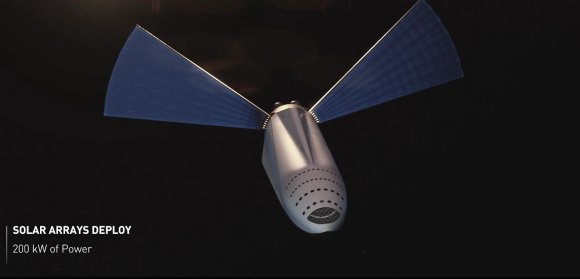
As to how this could be done, several strategies are outlined, many of which Musk and space agencies like NASA are already actively pursuing. They include full Reusability, where all stages of a rocket and its cargo module (not just the first stage) would have to be retrievable and reusable. Refueling in Orbit is a second means, which would mean the spacecraft would not have to carry all the fuel they need with them from Earth.
On top of that, there would have to be the option for propellant Production on Mars, where the spaceship will be able to refuel at Mars to make the return trip. This concept has been explored in the past for lunar and Martian missions. And in Mars’ case, the presence of atmospheric and frozen CO², and water in both the soil and the polar ice caps, would mean that methane, oxygen and hydrogen fuel could all be manufactured.
Lastly, there is the question of which propellant would be best. As it stands, there are there basic choices when it comes – kerosene (rocket fuel), hydrogen, and methane. All of these present certain advantages and can be manufactured in-situ on Mars. But based on a cost-benefit breakdown, Musk claims that methane would be the most cost-effective propellant.
As always, Musk also raised the issue of timelines and next steps. This consisted of a rundown of SpaceX’s accomplishments over the past decade and a half, followed by an outline of what he hopes to see his company do in the coming years and decades.
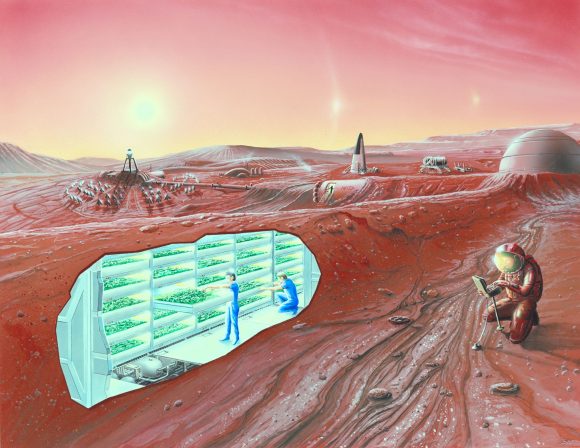
These include the development of the first Interplanetary Spaceship in about four years time, which will be followed by suborbital test flights. He even hinted how the spacecraft could have commercial applications, being used for the rapid transportation of cargo around the world. As for the development of the booster, he indicated that this would be a relatively straightforward process since it simply involves scaling up the existing Falcon 9 booster.
Beyond that, he estimated that (assuming all goes well) a ten-year time frame would suffice for putting all the components together so that it would work for bringing people to Mars. Last, but not least, he offered some glimpses of what could be accomplished with ITS beyond Mars. As the name suggests, Musk is hoping to conduct missions to other destination in the Solar System someday.
Given the opportunities for in-situ fuel production (thanks to the abundance of water ice), the moons of both Jupiter and Saturn were mentioned as possible destination. But beyond moons like Europa, Enceladus, and Titan (all of which were mentioned), even destinations in the trans-Neptunian region of the Solar System were indicated as a possibility.
Given that Pluto also has an abundance of water ice on its surface, Musk claimed that a refueling depot could be built here to service missions to the Kuiper Belt and Oort Cloud. “I would not recommend this for interstellar journeys,” he admitted, “but this basic system—provided we have filling stations along the way—means full access to the entire greater solar system.”
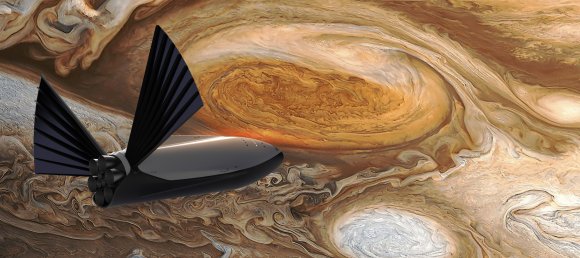
The publication of this paper, many months after Musk presented the details of his plan to the annual IAC meeting, has naturally generated both approval and skepticism. While there are those who would question Musk’s timelines and his ability to deliver on the proposals contained within, others see it as a crucial step in the fulfillment of Musk’s long-held desire to see the colonization of Mars happen in this century.
To Scott Hubbard, it serves as a valuable contribution to the history of space exploration, something that future generations will be able to access so they can chart the history of Mars exploration – much in the same way NASA archival materials are used to study the history of the Moon landing. As he remarked:
“In my view, publishing this paper provides not only an opportunity for the spacefaring community to read the SpaceX vision in print with all the charts in context, but also serves as a valuable archival reference for future studies and planning. My goal is to make New Space the forum for publication of novel exploration concepts-particularly those that suggest an entrepreneurial path for humans traveling to deep space.”
Elon Musk is no stranger to thinking big and dreaming big. And while many of his proposals in the past did not come about in the time frame he originally specified, no one can doubt that he’s delivered so far. It will be very exciting to see if he can take the company he founded 15 years ago for the sake of fostering the exploration of Mars, and use it instead to lead a colonization effort!
Update: Musk tweeted his thanks to Hubbard for the publication and has indicated that there are some “major changes to the plan coming soon.”
And be sure to check out this video of Musk’s full speech at the 67th annual meeting of the IAC, courtesy of SpaceX:
Further Reading: New Space
SpaceX Just Re-Used a Rocket. Why This Changes Everything
On March 30, 2017, SpaceX performed a pretty routine rocket launch. The payload was a communications satellite called SES-10, owned by a company in Luxembourg. And if all goes well, the satellite will eventually make its way to a high orbit of 35,000 km (22,000 miles) and deliver broadcasting and television services to Latin America.
For all intents and purposes, this is an absolutely normal, routine, and maybe even boring event in the space industry. Another chemical rocket blasted off another communications satellite to join the thousands of satellites that have come before.
Of course, as you probably know, this wasn’t a routine launch. It was the first step in one of the most important achievements in space flight – launch reusability. This was the second time the 14-story Falcon 9 rocket had lifted off and pushed a payload into orbit. Not Falcon 9s in general, but this specific rocket was reused.
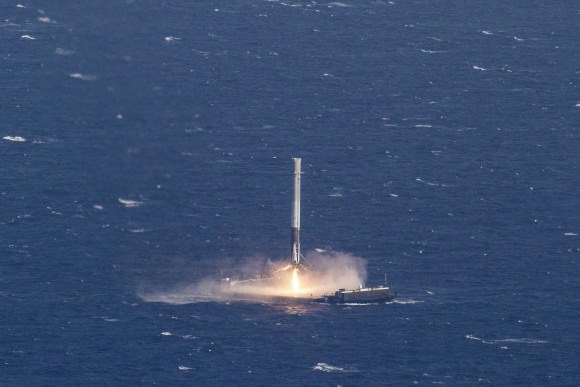
In a previous life, this booster blasted off on April 8, 2016 carrying CRS-8, SpaceX’s 8th resupply mission to the International Space Station. The rocket launched from Florida’s Cape Canaveral, released its payload, re-entered the atmosphere and returned to a floating robotic barge in the Atlantic Ocean called Of Course I Still Love You. That’s a reference to an amazing series of books by Iain M. Banks.
Why is this such an amazing accomplishment? What does the future hold for reusability? And who else is working on this?
Developing a rocket that could be reused has been one of the holy grails of the space industry, and yet, many considered it an engineering accomplishment that could never be achieved. Trust me, people have tried in the past.
Portions of the space shuttle were reused – the orbiter and the solid rocket boosters. And a few decades ago, NASA tried to develop the X-33 as a single stage reusable rocket, but ultimately canceled the program.
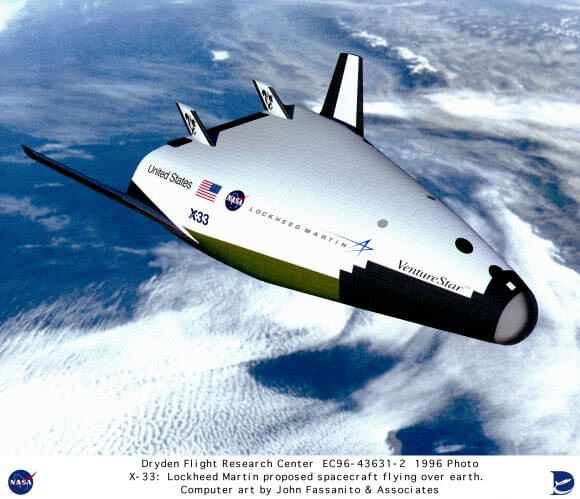
To reuse a rocket makes total sense. It’s not like you throw out your car when you return from a road trip. You don’t destroy your transatlantic airliner when you arrive in Europe. You check it out, do a little maintenance, refuel it, fill it with passengers and then fly it again.
According to SpaceX founder Elon Musk, a brand new Falcon 9 first stage costs about $30 million. If you could perform maintenance, and then refill it with fuel, you’d bring down subsequent launches to a few hundred thousand dollars.
SpaceX is still working out what a “flight-tested” launch will cost on a reused Falcon 9 will cost, but it should turn into a significant discount on SpaceX’s already aggressive prices. If other launch providers think they’re getting undercut today, just wait until SpaceX really gets cranking with these reused rockets.
For most kinds of equipment, you want them to have been re-used many times. Cars need to be taken to the test track, airplanes are flown on many flights before passengers ever climb inside. SpaceX will have an opportunity to test out each rocket many times, figuring out where they fail, and then re-engineering those components. This makes for more durable and safer launch hardware, which I suspect is the actual goal here – safety, not cost.
In addition to the first stage, SpaceX also re-used the satellite fairing. This is the covering that makes the payload more aerodynamic while the rocket moves through the lower atmosphere. The fairing is usually ejected and burns up on re-entry, but SpaceX has figured out how to recover that too, saving a few more million.
SpaceX’s goals are even more ambitious. In addition to the first stage booster and launch fairing, SpaceX is looking to reuse the second stage booster. This is a much more complicated challenge, because the second stage is going much faster and needs to lose a lot more velocity. In late 2014, they put their plans on hold for a second stage reuse.
SpaceX’s next big milestone will be to decrease the reuse time. From almost a year to under 24 hours.
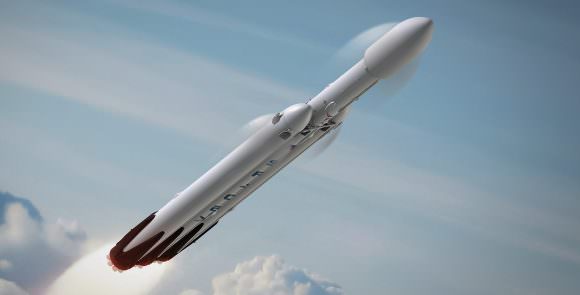
Sometime this year, SpaceX is expected to do the first launch of the Falcon Heavy. A launch system that looks like it’s made up of 3 Falcon-9 rockets bolted together. Since that’s basically what it is.
The center booster is a reinforced Falcon-9, with two additional Falcon-9s as strap-on boosters. Once the Falcon Heavy lifts off, the three boosters will detach and will individually land back on Earth, ready for reassembly and reuse. This system will be capable of carrying 54,000 kilograms into low Earth orbit. In addition, SpaceX is hoping to take the technology one more step and have the upper stage return to Earth.
Imagine it. Three boosters and upper stage and payload fairing all returning to Earth and getting reused.
And waiting in the wings, of course, is SpaceX’s huge Interplanetary Transport System, announced by Elon Musk in September of 2016. The super-heavy lift vehicle will be capable of carrying 300,000 kilograms into low Earth orbit.

For comparison, the Apollo era Saturn V could carry 140,000 kg into low Earth orbit, so this thing will be much much bigger. But unlike the Saturn V, it’ll be capable of returning to Earth, and landing on its launch pad, ready for reuse.
SpaceX just crossed a milestone, but they’re not the only player in this field.
Perhaps the biggest competitor to SpaceX comes from another internet entrepreneur: Amazon’s Jeff Bezos, the 2nd richest man in the world after Bill Gates. Bezos founded his own rocket company, Blue Origin in Seattle, which had been working in relative obscurity for the last decade. But in the last few years, they demonstrated their technology for reusable rocket flight, and laid out their plans for competing with SpaceX.
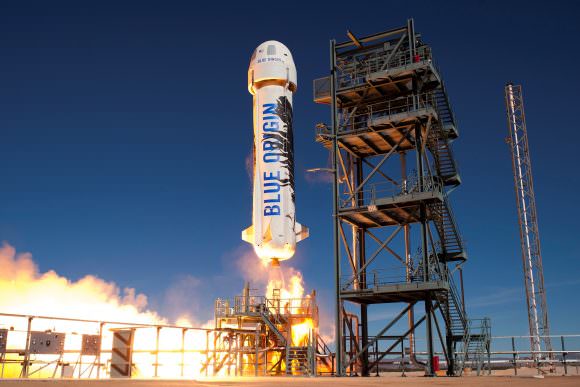
In April 2015, Blue Origin launched their New Shepard rocket on a suborbital trajectory. It went up to an altitude of about 100 km, and then came back down and landed on its launch pad again. It made a second flight in November 2015, a third flight in April 2016, and a fourth flight in June 2016.
That does sound exciting, but keep in mind that reaching 100 km in altitude requires vastly less energy than what the Spacex Falcon 9 requires. Suborbital and orbital are two totally milestones. The New Shepard will be used to carry paying tourists to the edge of space, where they can float around weightlessly in the vomit of the other passengers.
But Blue Origin isn’t done. In September 2016, they announced their plans for the follow-on New Glenn rocket. And this will compete head to head with SpaceX. Scheduled to launch by 2020, like, within 3 years or so, the New Glenn will be an absolute monster, capable of carrying 45,000 kilograms of cargo into low Earth orbit. This will be comparable to SpaceX’s Falcon Heavy or NASA’s Space Launch System.
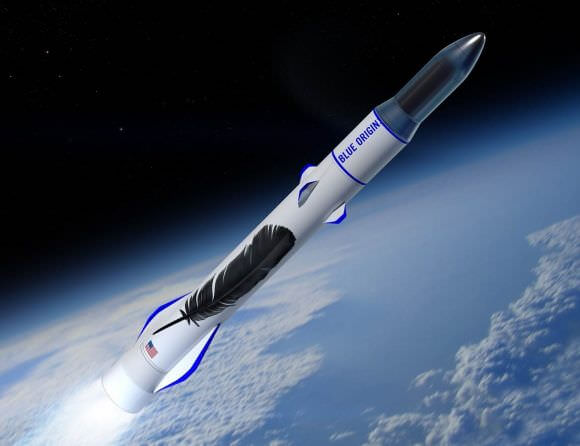
Like the Falcon 9, the New Glenn will return to its launch pad, ready for a planned reuse of 100 flights.
A decade ago, the established United Launch Alliance – a consortium of Boeing and Lockheed-Martin – was firmly in the camp of disposable launch systems, but even they’re coming around to the competition from SpaceX. In 2014, they began an alliance with Blue Origin to develop the Vulcan rocket.
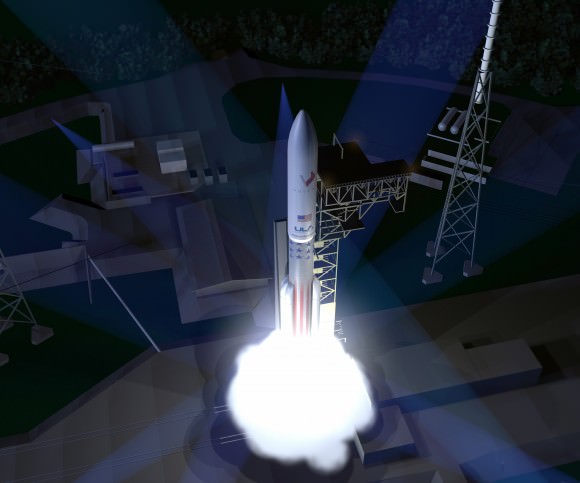
The Vulcan will be more of a traditional rocket, but some of its engines will detach in mid-flight, re-enter the Earth’s atmosphere, deploy parachutes and be recaptured by helicopters as they’re returning to the Earth. Since the engines are the most expensive part of the rocket, this will provide some cost savings.
There’s another level of reusability that’s still in the realm of science fiction: single stage to orbit. That’s where a rocket blasts off, flies to space, returns to Earth, refuels and does it all over again. There are some companies working on this, but it’ll be the topic for another episode.
Now that SpaceX has successfully launched a first stage booster for the second time, this is going to become the new normal. The rocket companies are going to be fine tuning their designs, focusing on efficiency, reliability, and turnaround time.
These changes will bring down the costs of launching payloads to orbit. That’ll mean it’s possible to launch satellites that were too expensive in the past. New scientific platforms, communications systems, and even human flights become more reasonable and commonplace.
Of course, we still need to take everything with a grain of salt. Most of what I talked about is still under development. That said, SpaceX just reused a rocket. They took a rocket that already launched a satellite, and used it to launch another satellite.
It’s a pretty exciting time, and I can’t wait to see what happens next.
Now you know how I feel about this accomplishment, I’d like to hear your thoughts. Do you think we’re at the edge of a whole new era in space exploration, or is this more of the same? Let me know your thoughts in the comments.



